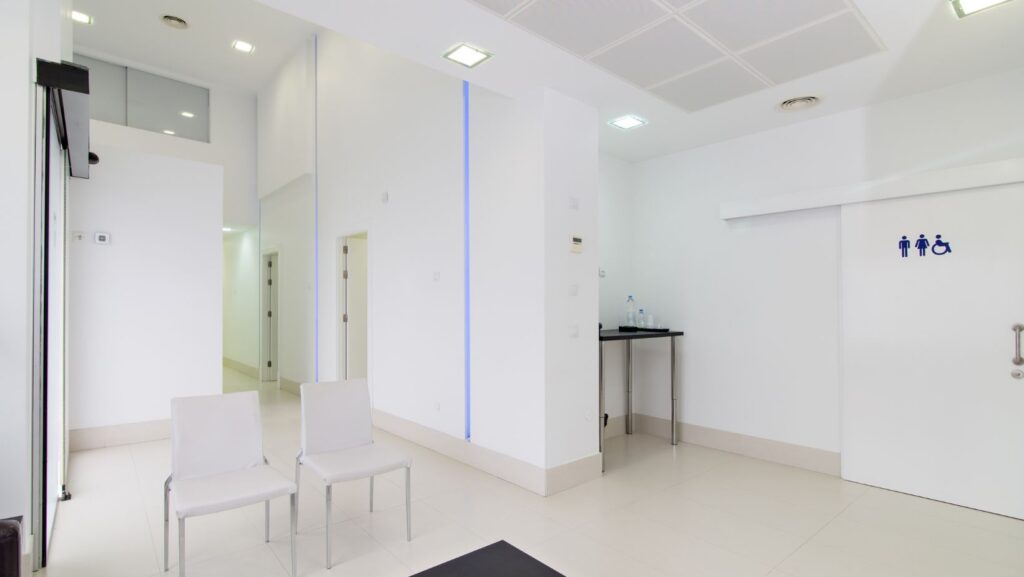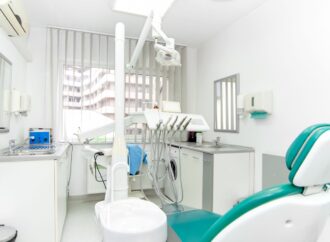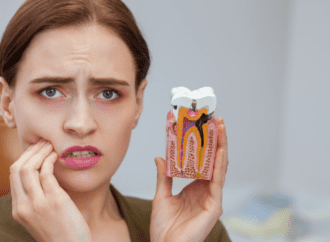The layout of a healthcare facility encompasses more than just appealing decorations. In reality, effective interior design has a significant impact on the well-being of patients and their recovery. These characteristics help explain why medical office contractors and dental practice builders pay great attention to an environment’s healing attributes. This article serves as a guide
The layout of a healthcare facility encompasses more than just appealing decorations. In reality, effective interior design has a significant impact on the well-being of patients and their recovery. These characteristics help explain why medical office contractors and dental practice builders pay great attention to an environment’s healing attributes. This article serves as a guide for analyzing the impact of medical design features on patient recovery, comfort, mental health, and other related outcomes.
The Role of Interior Design in Patient Wellbeing
When one considers a healthcare facility’s space, there are functional considerations, and then there are additional non-tangible ones. Healthcare design and construction are meant to go beyond simply addressing the medical needs of patients. An intentionally designed structure can become a therapeutic architectural shell instead of a medical one. Healing is facilitated in the construction and design of adjustment structures that enable and foster illness recovery and emotional comfort. Most building construction in the medical field is designed with features that help patients undergo physical recovery while feeling safe and less anxious during emotionally charged treatment procedures.
Prioritizing Comfort and Accessibility
Seating and Furniture Design with an Ergonomic Perspective
Comfort is a primary cornerstone in any health interior design project. In terms of patient experience and satisfaction, comfort levels significantly impact the rate of recovery. It is also essential to ensure that patients have access to ergonomic seating in waiting rooms and treatment areas, as this helps reduce stress levels. In many cases, the usability of the healthcare space, particularly in terms of furniture and chair selection, enhances the user environment, which supports healing for both patients and staff.
Accessibility for All
Comfort and accessibility go hand in hand. Mobility impairment, including that of individuals who require the use of wheelchairs, poses a challenge to healthcare contractors in ensuring that any space, such as hallways, toilets, and waiting areas, is accessible. Navigation is facilitated by the provision of clear instructions or signage in contrasting colors, along with wider door openings, which reduce confusion and facilitate smooth movement. It is common for healthcare contractors to work with, so they utilize their expertise and skills to create environments where every patient is catered to, and nobody feels left out.
Incorporating Biophilic Elements and Natural Light in Interiors
The use of Natural Light within Spaces
Natural light is one of the essential elements that is vital to the development of a healthy environment. Construction and design professionals in medical fields appreciate the effects that light has on the body and state of mind. Studies indicate that exposure to sunlight helps decrease stress levels, improve moods, and, in some instances, accelerate recovery processes. The patient experience in medical institutions can be significantly improved by strategically designing these facilities to incorporate large windows or open areas that capture natural light.
Biophilic Elements in Design
The renovation of medical offices to incorporate biophilic design features serves as a blend between the interior and the outer environment. Healthcare interior design, which includes elements such as indoor plants, natural textures, and water features, has a calming effect, helping to alleviate tension and stress. The patient’s mental health can be improved drastically when features like these are incorporated. Integrating nature-inspired aesthetics and functional design principles enables medical builders to create facilities that promote healing.
Harnessing the Power of Colour Psychology
Soothing and Calming Colours
Designers, particularly those in healthcare, are familiar with the psychological implications of different colors. Dental office contractors and medical office builders often use blues, greens, and earth tones to reduce anxiety and promote relaxation. The atmosphere nurtures and protects, cradling the heart and mind. Knowledgeable healthcare contractors recognize that the entire palette can aid in creating a more tranquil environment that helps patients recuperate.
Strategic Use of Bright Colours
Certain parts of healthcare spaces require brighter colors. Dental practice builders, as well as medical office contractors, use oranges and yellows to liven up staff break rooms and children’s areas. These colors evoke positive effects, promoting feelings of optimism and happiness.
Shaping Adaptive Spaces for Varying Healthcare Requirements
Rooms with Multiple Uses
Structures that support healthcare services must evolve, and so must the spaces within them. Healthcare general contractors are concerned with developing support areas and boundaries that can serve multiple purposes. For instance, medical office construction companies create spaces that can be easily adapted to various specialties, procedures, or other patient-related activities. This kind of flexibility helps the facilities’ operations stay practical and up-to-date.
Quickly Changeable Space with Modular Furniture
Modular furniture is ideal for modern medical facilities. Healthcare contractors design modular furniture that enables the use of space more efficiently. For instance, when there is a short-term surge in patients or a need to conduct a specific treatment within a constrained physical space, modular furniture helps optimize the use of every square foot.
Use of Acoustics Design in Noise Reduction
Sound Absorbing Panels
Noise levels established within the walls of a healthcare facility can be unbearable. Patients and the workforce may be rest-hindered and frayed. One way that healthcare contractors tackle the issue is through acoustics design. This is achieved through the use of sound-absorbing ceiling panels and sound-attenuating partition walls. Such materials were issued to capture noise produced in high-density areas, including medical equipment and staff communications, to provide an environment that enables peaceful rest.
Construction Mitigation Measure – Soft Flooring
Soft materials, such as carpet and vinyl, not only enhance the aesthetic appeal of the unit but also absorb noise caused by footsteps. This makes the environment quieter and enhances the peaceful atmosphere. This flooring choice softens the noise from foot traffic, which in turn increases patient satisfaction and improves staff productivity.
Balancing Privacy and Interaction
Private Areas for Patients
Patient privacy is a crucial consideration in the design of healthcare interiors. Dental and medical office contractors must ensure that private consultation rooms, recovery areas, and examination spaces are designed to guarantee security and confidentiality. Utilizing partitions or fully enclosed rooms goes a long way toward ensuring patients feel respected at their most vulnerable moments.
Open communication Areas
While it is important to ensure privacy, it is also essential to promote community engagement. Healthcare design and construction seeks to achieve this by providing open-plan waiting areas and communal spaces. These spaces aim to foster a sense of community while still allowing a level of discretion and comfort.
Selecting Hygienic and Durable Materials
Antimicrobial Surfaces
In healthcare facilities, clean and hygienic environments are significant prerequisites. Contractors for dental office renovations and healthcare construction use antimicrobial materials on surfaces that are frequently touched, such as counters, doorknobs, and handrails. This helps maintain hygiene in these facilities and enhances overall patient safety. This ensures a germ- and bacteria-free environment, thereby contributing to patient safety.
Easy-To-Clean Flooring Solutions
In medical office construction, seamless flooring options, such as vinyl or rubber, are also essential. These materials are easier to maintain and clean, as well as more durable, which aids in sanitation. They also help reduce the accumulation of dirt, making general maintenance easier.

Incorporating Technology In Healthcare Design
Digital Wayfinding Systems
Patients navigating an extensive facility is one of the significant challenges for larger medical centers. The construction and design of healthcare facilities often employ digital wayfinding systems, which enable patients to quickly locate their appointments. Digital signage and interactive kiosks can be used to provide updated information instantly, making the overall experience more seamless and less hectic for patients.
Furniture Integrating Modern Technologies
The most recent technological advancement is breaking into the monitoring and design of healthcare interiors. Construction firms specializing in health facilities are now incorporating furniture with charging facilities and interface screens for convenience. The added value of such furniture enhances the functionality and aesthetic appeal of the waiting areas. There is an effort to create sophisticated environments that are suitable for modern society.
Final thoughts: Design Led Healing
Properly designed interiors in healthcare establishments can significantly benefit patients. The design of the spaces affects patients’ comfort, ease of access, utilization of natural and modern technological resources, and overall well-being as they navigate through the treatment process. Whether it is medical construction contracting or a dental office building, it is evident that focusing on creating environments that foster healing will promote better patient recovery. These values will enable the healthcare facilities to improve the quality of service provided in terms of patient care, pleasant environment, and recovery.


















Leave a Comment
Your email address will not be published. Required fields are marked with *